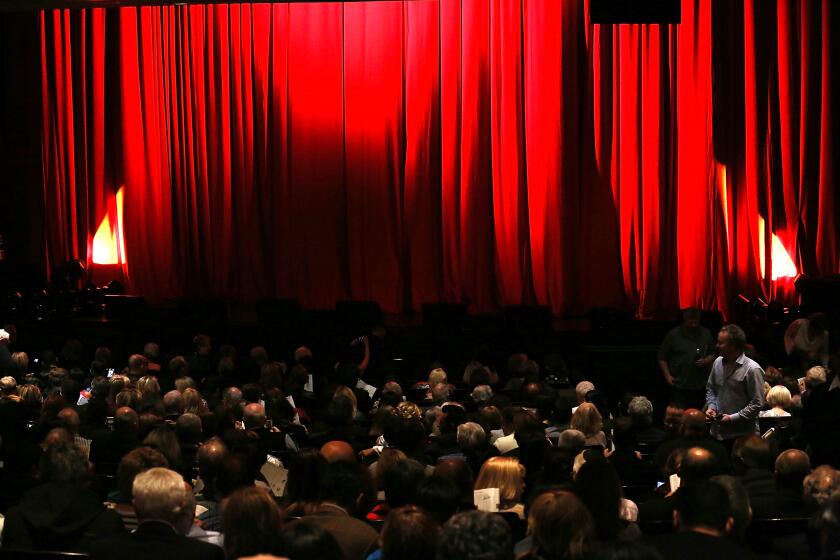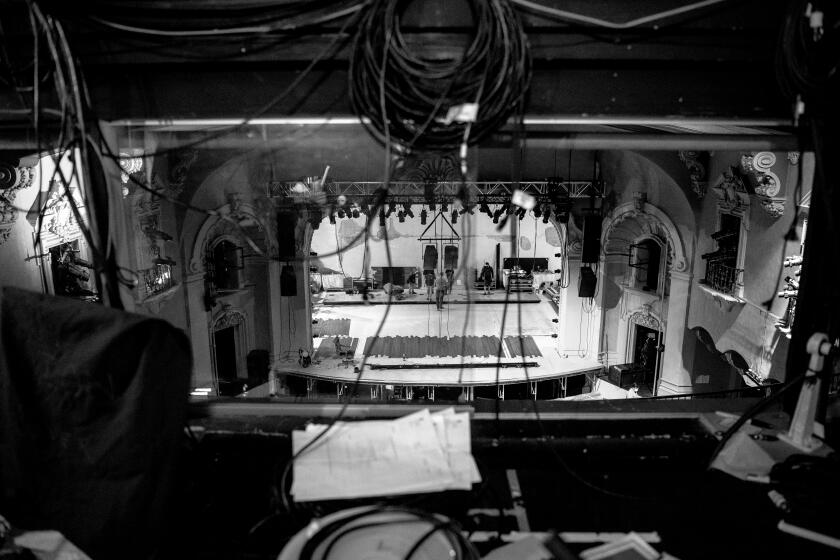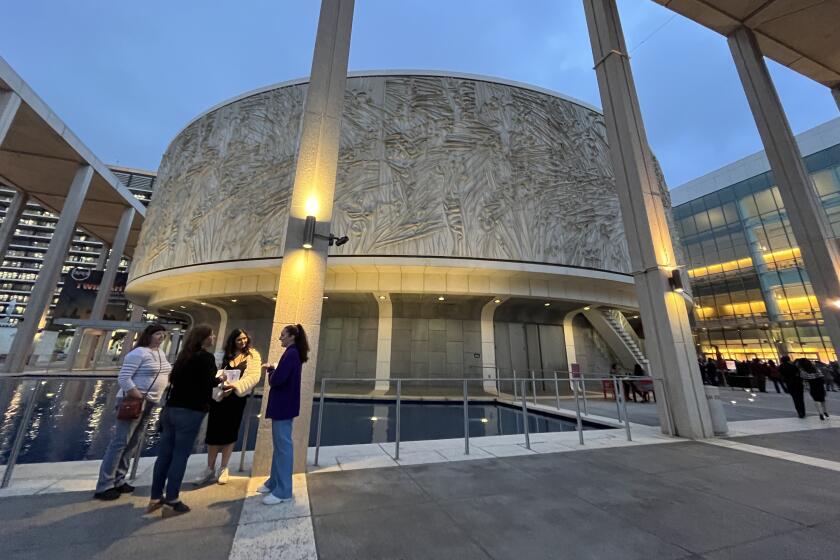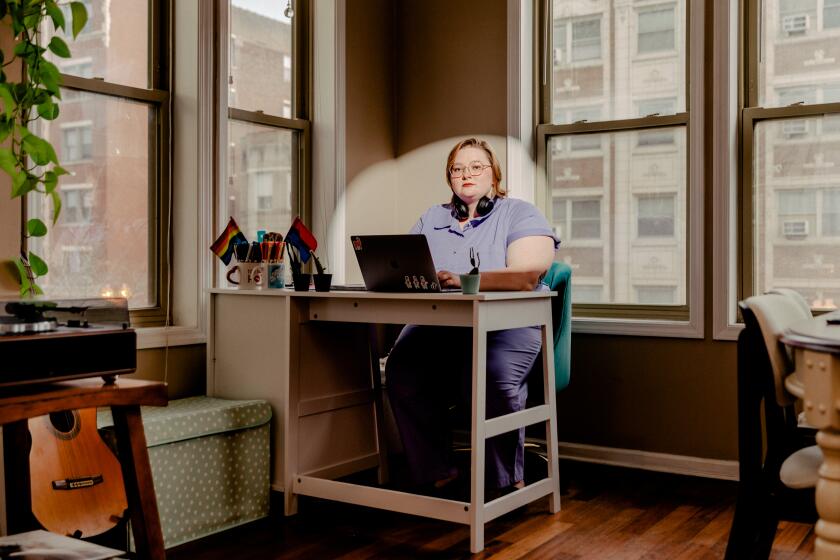American theater is in crisis. Some big names want Congress to help
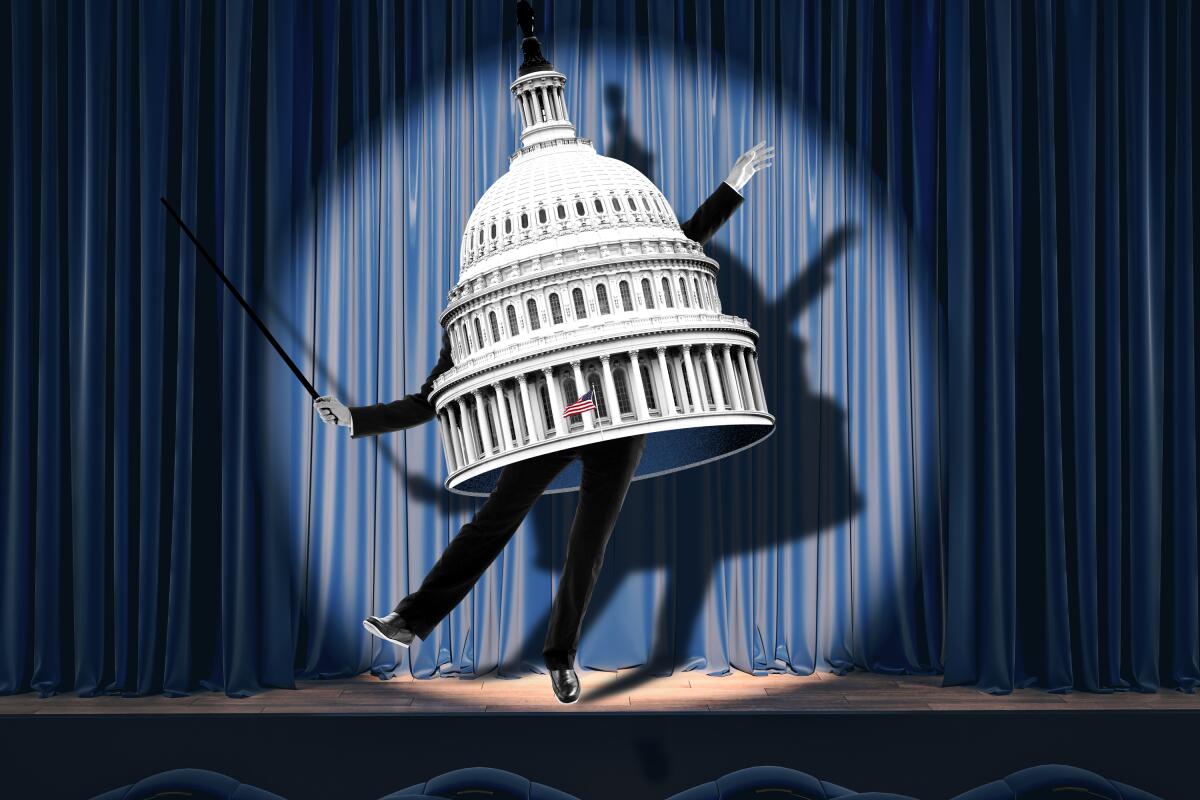
- Share via
Lin-Manuel Miranda, Phylicia Rashad and many more prominent figures in the American theater will meet in Washington, D.C., on Thursday to brief congressional leaders on the ongoing crisis facing the nation’s nonprofit regional theaters. The event, hosted by Sen. Charles E. Schumer (D-N.Y.), will serve as the introduction of the Supporting Theater and Generating Economic Activity Act, a federal funding initiative that has the potential to stimulate the theater industry as it continues to recover from the COVID-19 pandemic and other challenges.
If passed, the measure — also known as the STAGE Act — would provide $500 million in grant assistance annually to nonprofit regional theaters for five years, or roughly 20% of the eligible organizations’ collective budgets.
“To the federal government, it’s a pretty small amount of money, but it would make an unbelievable difference to theaters across the country,” Oskar Eustis, artistic director of New York’s Public Theater, told The Times. “Every theater would survive, and could serve our communities in ways that, right now, we’re struggling to do.”
The bill is the latest effort of the Professional Non-Profit Theater Coalition, a group of artistic, managing and executive directors from over 140 theaters across all 50 states. Created by former Oregon Shakespeare Festival artistic director Nataki Garrett, the fast-growing group was formed during the pandemic shutdown to advocate for theaters’ inclusion in the Shuttered Venues Operators Grant program and Paycheck Protection Program loan distribution.
What audiences really want out of going to the theater, the Mission San Gabriel Museum reopens after a devastating fire, and other arts news
Led by a steering committee rather than an individual, and allowing participating theaters to contribute “pay what you can” dues in proportion to their budgets, the coalition is an “unprecedented” innovation in the organization of theater leaders, according to Danny Feldman, artistic director of the Pasadena Playhouse: “We now all spend a good amount of time working together on fieldwide issues, and not just working alone on our own institutions.”
“It became clear that we need to change the relationship of the American theater to the federal government,” Maria Manuela Goyanes, artistic director of Washington, D.C.’s Woolly Mammoth Theatre, said of the coalition’s formation. “If you’re not at the table, you’re on the menu, so we are all going to make sure we are at the table.”
Thursday’s briefing will be the first official public event for the coalition, which has partnered with lobbying firm Arnold & Porter. Miranda, Rashad and others plan to highlight regional theaters as economic hubs: Whether in rural townships or urban centers, nonprofit theaters create numerous jobs on and off the stage, draw crowds that patronize neighboring restaurants and hotels, and incubate stories retold on Broadway or by Hollywood and then exported internationally.
Prior to the pandemic, the nonprofit theater sector added over $2.8 billion to the U.S. economy through direct payments of goods and services, supported the employment of 145,000 artists, administrators and technical production staff and served an estimated 38 million audience members, according to a Theatre Communications Group report.
“The impact of the regional American theater on the economy is not as widely known, but that’s the language some people speak best,” said Feldman. “The data is clear — the theater is an essential part of the health and welfare of America, but we have not made the bounce back that other performing arts have. And when the auto industry says, ‘We’re in crisis,’ the government gives them billions of dollars. So why are we not treated in the same way?”
After nearly two years of pandemic closures, live theater has returned. But attendance is down, operational costs are soaring, and leaders are worried.
Speakers at the briefing will also point to nonprofit theater as a public good that regularly provides its community with arts education, public health partnerships and free programming that addresses specific social issues. For example, political strategist and Public Theater board Chair Luis A. Miranda Jr. cited Repertorio Español, which provides New York students with matinee performances, lectures, Q&As and sequential lessons designed to enhance classroom assignments.
“The ‘Hamilton’ education initiative is an anomaly in the Broadway scene, but it’s the work that nonprofit theaters do all the time,” said Miranda, who is Lin-Manuel’s father. “I also want to be fair to elected officials, who have to cover every topic, from collecting garbage and recycling to regulating artificial intelligence.
“That’s why you have to be in their faces, reminding them that you provide all these services to their community, you employ their constituents and drive all this economic activity. And this is going to be the first of many times that we’ll remind them.”
Additionally, the coalition will stress that preserving the nonprofit theater sector is a bipartisan issue. “Sens. John Cornyn and Amy Klobuchar came together to do amazing and important work with the Shuttered Venue Operators Grant,” said Goyanes.
“And there are Republicans who are on the boards of theaters and attend theater regularly. So that old narrative maybe goes back to the culture wars of the NEA [National Endowment for the Arts] getting thrown around in the game of political football. Hopefully, we’re outgrowing that.”
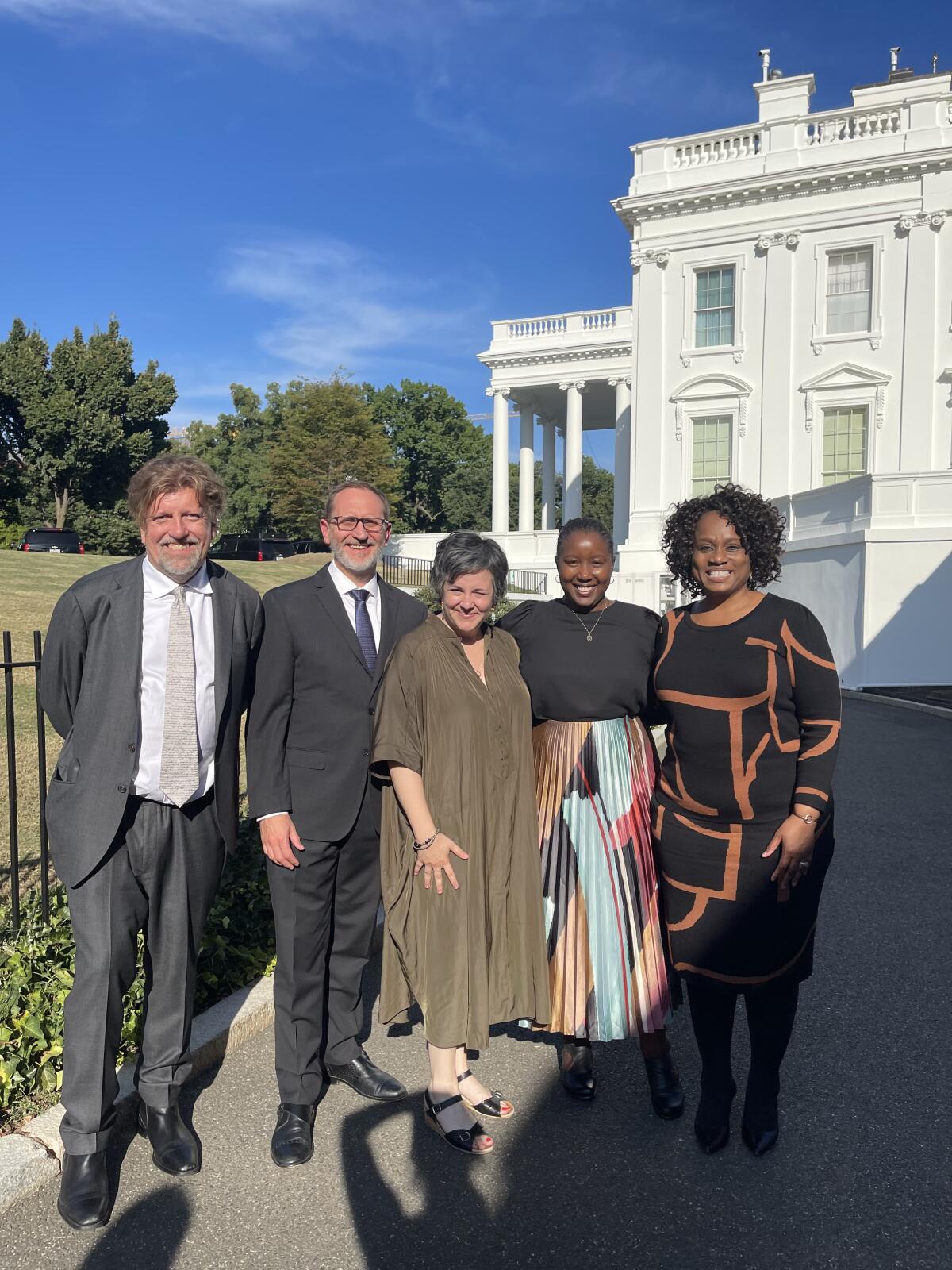
The Professional Non-Profit Theater Coalition is launching the STAGE Act after bills hatched by other groups since the pandemic shutdowns, such as the Creative Economy Revitalization Act — a grant program that prioritizes getting arts workers back into jobs — and the Promoting Local Arts and Creative Economy Workforce Act — a plan to bolster the infrastructure of numerous creative sectors — stalled in Congress.
The move comes as the country’s nonprofit theaters confront a precarious post-pandemic landscape. Numerous institutions, including L.A.’s Center Theatre Group, have reduced staff or paused programming to save money; those still putting on shows are doing fewer per season and with shorter runs, as reported by the New York Times. According to Greg Reiner, the director of theater and musical theater at the NEA, “We’re seeing two to three organizations closing a month.”
“A collapse in the nonprofit sector doesn’t just mean fewer theaters and fewer shows across the country; it also means less ambitious work, fewer risks taken and smaller casts,” critic and author Isaac Butler wrote this summer in a New York Times op-ed calling for an industrywide bailout.
“The reverberations will be felt up and down the theatrical chain, and a new generation of talent will be neglected. As with a bank collapse, in which a few foundering institutions can bring down a whole system, the entire ecosystem of American theater is imperiled.”
The titan of L.A. theater, Center Theatre Group, is shutting down the Mark Taper Forum for at least a year to save money. Will other theaters follow?
Record inflation, “donor fatigue” and transformed theatergoing habits have yielded additional ruptures in the usual cash flow.
“Subscriber bases have decreased and single tickets are sporadically doing really well,” said Jennifer Bielstein, executive director of San Francisco’s American Conservatory Theater. “People are certainly coming out for those spectacle event-type shows. But to be dependent on single ticket sales is less predictable and more volatile, especially for an organization that tries to produce an interesting, resonant, representative collection of stories across a season.
“All of us who are nonprofit are also focused on having accessibly-priced tickets to serve people for whom the cost of coming to the theater is a barrier,” she continued. “So when the revenues are down and expenses keep drastically going up, we still have that gap and could use that investment. I’m optimistic about the future because we’re seeing audience bases rebuilt, but we need some more runway.”
Existing federal funding has become inadequate for the ongoing crisis, industry leaders argue. While nonprofit theaters do receive grants from the NEA, the relatively limited funds are distributed on a project basis and through an arduous application process.
Otherwise, “most initiatives to help struggling arts professionals have been ad hoc and privately led,” wrote playwright Jeremy O. Harris in a 2021 Guardian op-ed calling for a strategy akin to the Federal Theater Project during the Great Depression. “We shouldn’t have to GoFundMe an entire industry, yet we are.”
At the state level, opportunities vary. Even in California, where Gov. Gavin Newsom recently signed trailer bills to reallocate $11.5 million in unused arts funding, “the struggles we’re having right now are going to take a long time for us to recover from, and we’re going to need more than one-off support,” said Snehal Desai, artistic director of CTG, citing a CVL Economics study which found that California has lost more than 150,000 live performing arts jobs since the pandemic.
“I don’t need for there to be success immediately,” said Eustis. “But I need for us as a field to concertedly stop asking for crumbs, and see if we can make the case that what we do is central to the lives of our communities — a case we make every day in our work.”
The pandemic’s collective pause over the last two years had many reconsidering their commitment to the theater industry. Here are 10 of their stories.
More to Read
The complete guide to home viewing
Get Screen Gab for everything about the TV shows and streaming movies everyone’s talking about.
You may occasionally receive promotional content from the Los Angeles Times.
